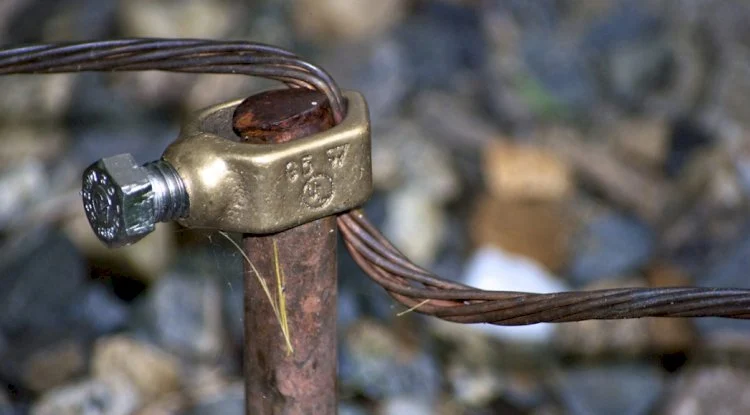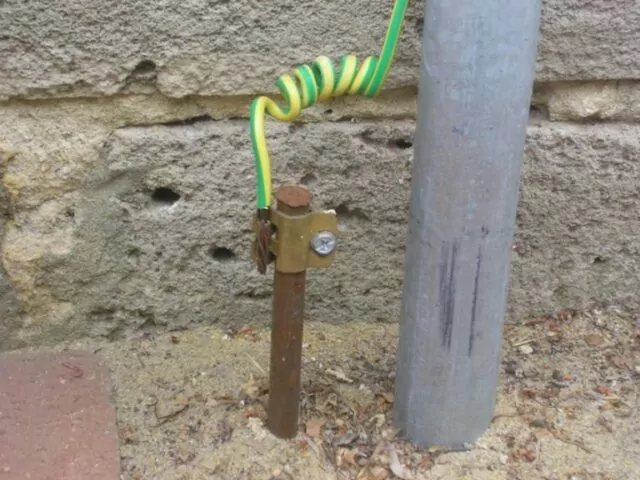I was just weeding the side garden, lost in my usual weekend rhythm, when my trowel hit something metallic. For a second, I thought I’d uncovered an old sprinkler head—or maybe some long-lost treasure buried under decades of soil. But no, it was something else entirely.
A thick copper wire, tarnished from age, peeked out from the dirt, firmly connected to a hefty metal rod driven deep into the earth. It looked important… but what was it?
Suddenly, a memory surfaced—my dad, years ago, explaining home grounding systems in his no-nonsense way:
“It’s like your seatbelt. You never think about it until you need it.”
Now I get it.
So What Was It, Really?
That weird wire? It’s the grounding system for the entire house. That fat, braided copper cable is riveted to a long grounding rod buried about 8 feet into the ground. It connects to your home’s main electrical panel and quietly does one of the most important jobs in the background.
If lightning strikes… if there’s a power surge… if a faulty appliance starts misbehaving—that grounding wire is what takes the hit. It safely channels excess electricity away, protecting everything and everyone inside the house.
It’s not flashy. It’s not something you’d notice unless you were digging around in the dirt like I was.
But now I know: it’s absolutely essential.

Is It Dangerous?
Only if you tamper with it. Cutting or removing a ground wire can compromise your home’s electrical safety—especially during storms or power surges. But if it’s intact and the clamp is secure, it’s quietly doing its job.
Mine looked a little aged, sure, but it felt solid. I decided to leave it be and made a mental note of exactly where it was.
Why Is It in Such a Random Spot?
Good question. Ground rods aren’t placed for aesthetics—they’re positioned wherever the soil makes solid contact. Ideally, that’s right outside the main breaker panel. But if the layout doesn’t cooperate, electricians will run the grounding wire to wherever it works best—even if that means winding it through a flower bed. That’s how mine ended up in the garden.
What Should You Do If You Find One?
-
Don’t cut or move it. That wire is a vital part of your home’s electrical system.
-
Mark the location. It’ll save you from accidentally damaging it during future yard work.
-
Trace the wire. It usually leads to your home’s main panel.
-
Call a pro if needed. If the wire looks corroded, loose, or disconnected, it’s worth having an electrician take a look.

Final Thought
That old wire I stumbled on? It’s still doing its job—silently protecting the home, just as it has for decades. Someone installed it long ago, carefully, with purpose. And without a sound, it’s been working ever since.
There’s something humbling about that.
I only meant to pull a few weeds, but I ended up unearthing a quiet reminder: so much of what keeps us safe and grounded—literally and figuratively—is buried just out of sight. We rarely think about it. But it’s there. Holding everything together.
